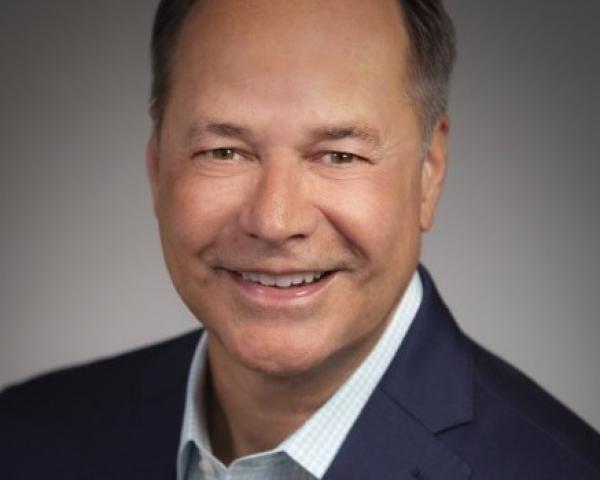In the early 1800s, a French builder brought the “Russian mountains” to Paris. Since the 1600s, Russians had been sending people zooming down hills on sleds on tracks made of ice, and the Frenchman wanted to duplicate the experience. But French winters aren't nearly as cold as those in Russia, so he built tracks with wooden rollers and ran the sleds over them. Thus, the term "roller coaster."
The roller coaster came to the U.S. in 1884, on Coney Island in New York, and is now a ubiquitous amusement ride. Somewhere along the way, “roller coaster” began to be used to describe any series of unbridled ups and downs.
Over the past four years, the P&C industry, among others, has fit the roller coaster analogy perfectly. In fact, think of the wildest ride you've ever been on.
Homeowner and auto lines have been the most tumultuous in comparison with commercial lines, mainly due to premium adequacy efforts. For instance, long-term underperforming business auto insurance had the humbling benefit of constant rate increases attempting to bolster anemic loss ratios -- an eye-popping 50 quarters in a row, now going on 13 years. Meanwhile, carriers were in a virtual home and auto race to the bottom in the pre-COVID years. Insurers pursued “switch and save,” “bundle and save” marketing strategies along with huge investments in lead generation as they recognized most consumers first shop online before speaking with an agent to bind the sale.
These prolonged competitive conditions are partly responsible for the nearly unaffordable rates in the market today, particularly in homeowner lines. In hindsight, home lines were underpriced, not keeping pace with replacement costs. And in real time, carriers consciously balance overall profitability, products per household and the whole other side of insurance -- generation of revenue from investments. In other words, a trade-off of weak underwriting margins for healthy investment returns does happen.
Converging weather exposure, inflation, higher accident frequency, social inflation and other factors are hammering both home and auto underwriting performance. However, consumers struggle to digest massive differences in premiums from just a few years ago or even the last renewal. Bankrate reports a 26% increase for full coverage auto, and for $300,000 in dwelling coverage premiums average $2,270. Such increases are wreaking havoc on the housing and auto industries, as total cost of ownership is a real barrier. Car repossessions are up 23% over last year according to Cox Automotive, while the tandem of higher interest rates and insurance costs has disrupted real estate markets.
See also: 10 Pivotal Challenges Facing Insurers in 2024
Remain Buckled In: The Ride Is Not Over
Since 2017, there was only one year with a homeowner underwriting profit (2019), per S&P. Although the reinsurance market has begun to stabilize, the first half of 2024 global insured natural disasters reached $62 billion, higher than the 10-year, $37 billion average, according to Munich Re, jeopardizing rate flattening. Likewise, collision repair and injury claim costs remain elevated. The underlying factors of repair technician shortages, longer repair cycles, increased cost of new car technologies, distracted driving, higher accident frequency and social inflation continue or are rising.
On the upswing, overall insurer profitability and premium growth has been boosted by top line revenues simply due to major rate increases while net income has benefited from strong investment returns. Auto lines are recovering much more quickly while the outlook for homeowner lines underwriting profitability is less optimistic. Climate and weather exposure, inflationary pressure and reinsurance costs will fuel the coaster ride, with expected twists and turns ahead.
Uh Oh: More Ups and Downs
High rates only tell part of the story. So-called underwriting actions are taking hold, with more to come throughout 2024 and beyond. Such actions span: risk eligibility, specific requirements, limited capacity in certain markets, inspections and so on. This translates to higher scrutiny and greater burden to consumers and business owners, such as required roof replacement costing tens of thousands of dollars to be or remain eligible. Or high deductibles, moving from standard $250 to $500 amounts to percentage deductibles. Example, a 5% deductible on $300,000 “coverage A” home policy is $15,000. – a dramatic change by any measure.
Meanwhile the P&C industry and ecosystem have experienced numerous ups and downs, with layoffs, hiring sprees and reshuffled priorities as attention is diverted to profitability and all hands “righting the ship.” Despite innovation being the lifeblood and future to insurance modernization, insurtech solution providers are experiencing even longer sales cycles when working with carriers. Project investment and innovation budgets are evaporating, or the dreaded carrier ‘reprioritization’ realities can derail a budding partnership altogether. Just when the insurtech ride is slowing down... hold on... global insurtech funding surged ahead to $1.27 billion in the second quarter of 2024, the highest level since the beginning of 2023, according to Gallagher Re.
But not all carriers are in the same position.
Imagine the roller coaster ride consisting of 10 cars linked together and representing the top 10 U.S. carriers slowly ascending to the next peak before rapidly accelerating into the next dip. Now freeze-frame that image so some of the cars are ascending and others already descending. Apply this mental image to rates, profitability, layoffs, hiring, underwriting actions and market growth appetite, and we see several recovering and others yet to catch up.
It’s easy to visualize a very uneven, bumpy ride for all. For instance, Nationwide announced a 5% workforce reduction last week while Progressive reported growth plans to fill some 10,000 roles in April. Similar variation is found among combined ratios, from Progressive’s impressive 91.9 second quarter to others over 110.
This tail effect will continue throughout 2024-25 as evidenced through recent second quarter earnings. Variance in loss ratios translate to ranging rate indications and ultimately differences in rate selections by individual insurers. Likewise, consumers will shop for relief. Auto insurance shopping rates reached an all-time high between April and June as the quarterly quote rate increased to 13%, per J.D. Power.
See also: Insurance in 2030: What Does the Future Hold?
What’s Around the Next Bend?
As home and auto insurance affordability takes center stage, the looming consequences of uninsured and underinsured or growing protection gaps have yet to be fully realized. In auto claims, policyholders can be left holding the bag when an at-fault driver has insufficient or no insurance. This can be devastating when there are serious injuries. Increased out-of-pockets, delayed or forgone damage repairs, delayed or avoided claim reporting have implications to consumers as well as insurers and are more likely scenarios due to fundamental changes in risk transfer. Fraud and claiming for unrelated damages are of particular concern. Further, consider the next coastal tropical storm with more homeowners self-insuring or carrying massive percentage wind deductibles. More disruption is likely.
Outlook and Solutions
Aside from longer-term efforts to incorporate building resilience, several lawmakers are calling for federal disaster insurance. If it is modeled like the National Flood Insurance Program, it is reasonable to expect widening protection gaps, not to mention tremendous burden to taxpayers and costly premiums, as the NFIP has run a deficit since Hurricane Katrina in 2005, despite re-mapping, new underwriting standards and constant last-minute federal funding.
Technology and new products/services will play a major role in filling gaps and solving the insurance crisis, presenting, opportunities for entrepreneurs, solution providers, insurtechs and carriers. At a high level some of the potential concepts that are new or in-market look like:
- Climate tech to better predict, mitigate and prevent losses
- Aerial/geospatial services already in market and expanding
- Parametric insurance, filling gaps and addressing emergency costs
- Deductible and repair financing -- specialized and embedded
- Repair marketplaces matching customers with experts
- Micro insurance protection
- Home spending account savings and planning services
- Actual cash value coverages and policies
- Accident settlement services (outside of insurance claims)
- ADAS collision avoidance systems
- Sensor technology, alerting and avoiding damages, e.g. weather
- Telematics coaching and safe driving features
Reform and legislation will also play a key role, albeit long-term in nature. Recent reforms to Michigan’s no-fault system have already lowered premiums. Florida instituted sweeping tort reform in early 2023 and is showing signs of improvement. A handful of states are tackling litigation financing. And California has modified CAT risk modeling to permit a more prospective forecast in rate making for wildfire exposure. Clearly, more reform and legislation are needed to keep pace and tamp down abuses geared to unfairly inflating insurance costs.
So, buckle up. The roller coaster ride is far from over.









